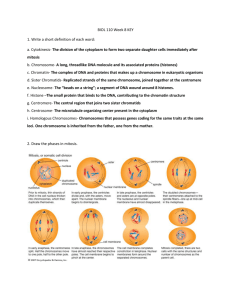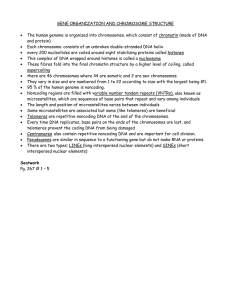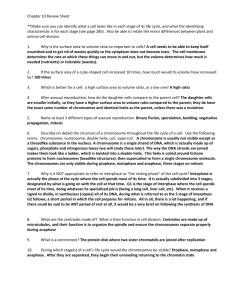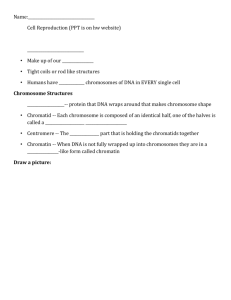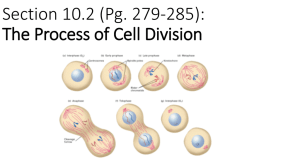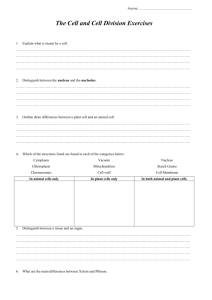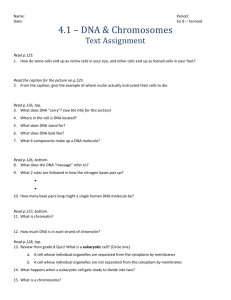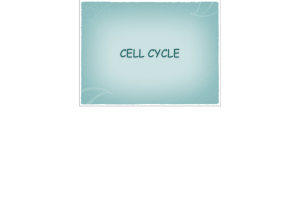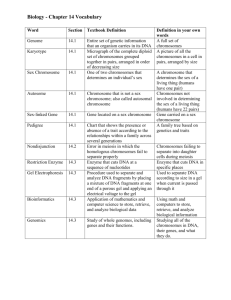Section 10.2 (Pg. 279-285): The Process of Cell Division
advertisement
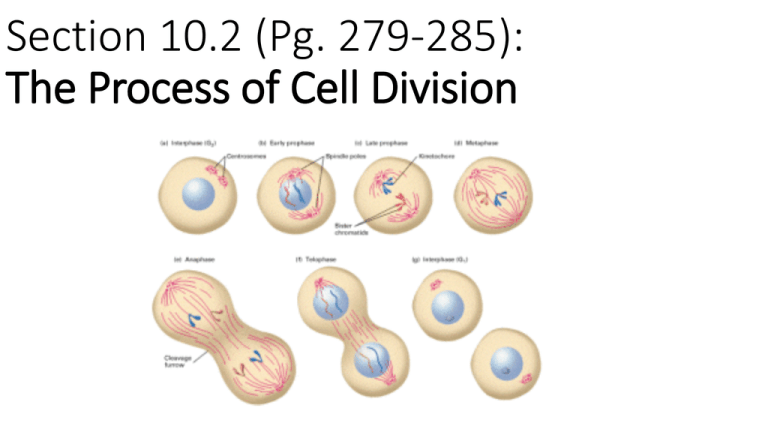
Section 10.2 (Pg. 279-285): The Process of Cell Division Eukaryote Chromosomes - Are genetic information bundled into packages of DNA - Make it possible to separate DNA precisely during cell division - Are packaged differently in prokaryotes and eukaryotes - Prokaryotes: small, circular chromosome - Eukaryotes: multiple chromosomes Prokaryote Eukaryotic Chromosomes - Are made of chromatin - DNA coils around proteins called histones - DNA coiled around histones forms a unit called a nucleosome - Chromosome shape is supercoiled chromatin Prokaryotic Cell Cycle - Prokaryotic cell division is called binary fission 1) Cell grows and chromosome duplicates 2) Cell membrane pinches in 3) Cell divides into two daughter cells Prokaryotic Cell The Eukaryotic Cell Cycle - Is when a cell grows, prepares for cell division, then divides - Is separated into two major parts: 1) Interphase 2) Cell division - Interphase and cell division have their own phases Interphase - Is the portion of a cell’s life in between cell division - G1 phase: Cell Growth – Cell grows and performs normal functions - S phase: DNA Synthesis – DNA is copied for cell division - G2 phase: Preparation for Cell Division – Organelles and molecules are copied for cell division Cell Division - Is also called M phase - Contains the phases of cell division - Mitosis – Is the division of the nucleus – Has 4 separate phases - Cytokinesis – Is the division of the cytoplasm DNA During Cell Division - Forms replicated chromosomes – Each half of the chromosome is called a sister chromatid – They are held together by a centromere - Is separated into daughter chromatids during cell division Before Cell Division - Cells are in interphase – Nucleus is intact – DNA has NOT yet formed chromosomes – Centrioles are lumped together near the nucleus

